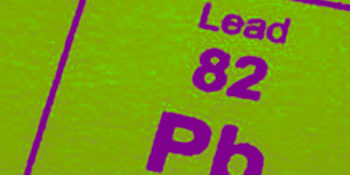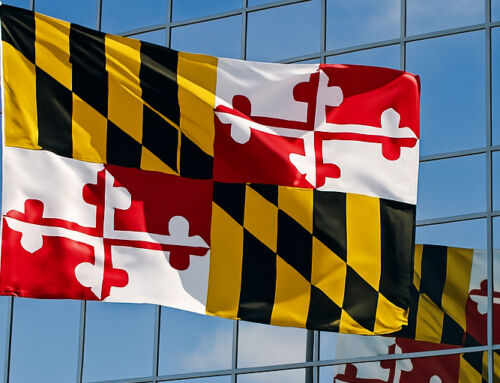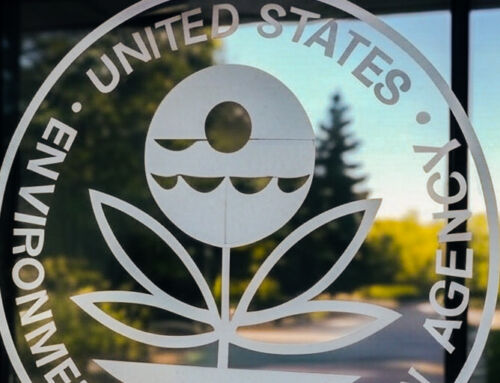View by Topic
Recent Articles
-
President Trump’s Bold Step to Rein in State Overreach in Climate ChangeSaturday, April 12th, 2025
-
Mandatory GHG Disclosures in Maryland Real Estate ContractsSaturday, April 5th, 2025
-
NYC Building Electrification Ruling is Interesting But Not a Game ChangerSaturday, March 29th, 2025
-
Greenpeace Ordered to Pay $667M in Blow to ActivismSaturday, March 22nd, 2025
-
The Most Consequential Day of Environmental Deregulation in American HistorySaturday, March 15th, 2025
View by Month/Year
“Green Building Law Update” Headlines
Recent Articles & News from
Stuart Kaplow’s blog
at GreenBuildingLawUpdate.com
- President Trump’s Bold Step to Rein in State Overreach in Climate Change April 13, 2025
- Mandatory GHG Disclosures in Maryland Real Estate Contracts April 6, 2025
- NYC Building Electrification Ruling is Interesting But Not a Game Changer March 30, 2025
- Greenpeace Ordered to Pay $667M in Legal Blow to Environmental Activism March 23, 2025
Subscribe to the Green Building Law Update!
Stuart Kaplow brings his expertise and extensive experience to the table with his unique digital publication, "Green Building Law Update". Subscribers receive regular updates to keep them informed about important issues surrounding Environmental Law, Green Building & Real Estate Law, as well as the emerging demand for Environmental Social Governance (ESG).
Get fresh content through the lense of Stuart Kaplow's cutting-edge expertise, innovative commentary and insider perspective. Don't miss another issue! Subscribe below.

Government to Allow Less Lead in Drinking Water
EPA is expected to publish this week in the Federal Register the first proposed regulatory revisions to the National Primary Drinking Water Regulation for lead in more than 30 years.
The United States has made tremendous progress in lowering children’s blood lead levels (.. children are a good data set analogous to the broader population). As a result of multiple Federal laws, including the 1973 phase-out of lead in automobile gasoline, the 1978 Federal regulation banning lead paint for residential use, and the 1995 ban on lead in solder in food cans, the median concentration of lead in the blood of children aged 1 to 5 years dropped from 15 micrograms per deciliter in 1976–1980 to 0.7 micrograms per deciliter in 2013–2014, a decrease of 95%. Although childhood blood lead levels have been substantially reduced there is overwhelming evidence to conclude that there are still adverse health effects associated with low-level lead exposure.
After the successes of those regulatory bans on lead, today drinking water is the largest controllable source of lead exposure in the U.S.
Lead enters drinking water mainly from corrosion of lead containing plumbing materials. Lead was widely used in plumbing materials until Congress banned its use in 1986, and there are an estimated 6.3 to 9.3 million homes served by lead service lines in thousands of communities nationwide, in addition to millions of older buildings with lead pipes, solder, fittings or service connections across the U.S. (.. and yes, PVC pipes also contain lead compounds that can leach into drinking water).
Since the implementation of the 1986 lead rule, drinking water exposures have declined significantly, resulting in major improvements in public health. For example, the number of the nation’s large drinking water systems that have exceeded the action level of 15 parts per billion (ppb) has decreased by over 90% and over 95% of the all water systems have not reported an action level exceedance in the last 3 years.
Despite this progress, there is a compelling need to modernize and improve the rule because there is no safe level of lead in drinking water.
Based on the pre-publication version, the proposed rule focuses on 6 key areas, requiring community water systems to:
- Identifying the most impacted areas by requiring water systems to prepare and update a publicly-available inventory of lead service lines and requiring water systems to “find-and-fix” sources of lead when a sample in a home exceeds 15 ppb.
- Strengthening drinking water treatment by requiring corrosion control treatment based on tap sampling results and establishing a new lower trigger level of 10 ppb (e.g., trigger is described below).
- Replacing lead service lines by requiring water systems to replace the water system-owned portion of the lines when a customer chooses to replace their portion of the line. Additionally, depending on their level above the trigger level, systems would be required take line replacement actions.
- Increasing drinking water sampling reliability by requiring water systems to follow new, improved sampling procedures and adjust sampling sites to better target locations with higher lead levels.
- Improving risk communication to customers by requiring water systems to notify customers within 24 hours if a sample collected in their home is above 15 ppb. Water systems will also be required to conduct regular outreach to the homeowners.
- Better protecting children in schools and child care facilities by requiring water systems to take drinking water samples from the schools and child care facilities served by the system.
That is, this is not a residential issue only. Some months ago I published a blog, Is There Lead in the Drinking Water of Your Green School? Among the issues raised in that post is why lead is found in the drinking water of some newly constructed LEED certified schools.
EPA’s proposal does not change the existing action level of 15 ppb. However, EPA is proposing for the first time a new lead trigger level of 10 ppb, which would compel water systems to identify actions that would reduce lead levels in drinking water. EPA’s new 10 ppb trigger level will enable systems to react more quickly should they exceed the 15 ppb action level in the future. These actions could include reevaluating current water treatment or conducting a pipe corrosion control study. Significantly systems above 10 ppb but below 15 ppb would be required to set an annual goal for conducting replacements and conduct outreach to encourage resident participation in replacement programs. Water systems above 15 ppb would be required to annually replace a minimum of 3% of the number of known or potential lines in the inventory at the time the action level exceedance occurs.
Critics have complained that requirement to replace a minimum of 3% of lead impacted lines annually, down from a requirement of 7%, could raise health risks, but EPA is clear that the changes will result in more line replacements, including because the proposed rule removes the many exemptions that currently stall line replacements. Moreover, those critics ignore the new lower 10 ppb trigger for lead reduction activities; a lower floor that should be applauded. 10 ppb is not simply a ‘90s grunge is “in” versus a ‘70s tailoring is “out” trend, but rather the lower floor that has major implications.
Lead is drinking water is much more than only a Flint, Michigan problem. Last year the EPA described lead as the number one environmental public health hazard in the U.S.
Again, to be clear, there is no safe level of lead in drinking water. Period.
That government operated water utilities deliver water containing lead is not acceptable.
Water utility level replacement of lead impacted water lines is incredibly efficacious. Most Americans will not drink only certified bottled water. But they should use a ‘point of use’ certified filter on all tap water and flush the water to reduce exposure to lead from household plumbing.
Comments on the proposed rule must be received within 60 days of being published. And beginning today, use a filter on the tap water at home and work!









